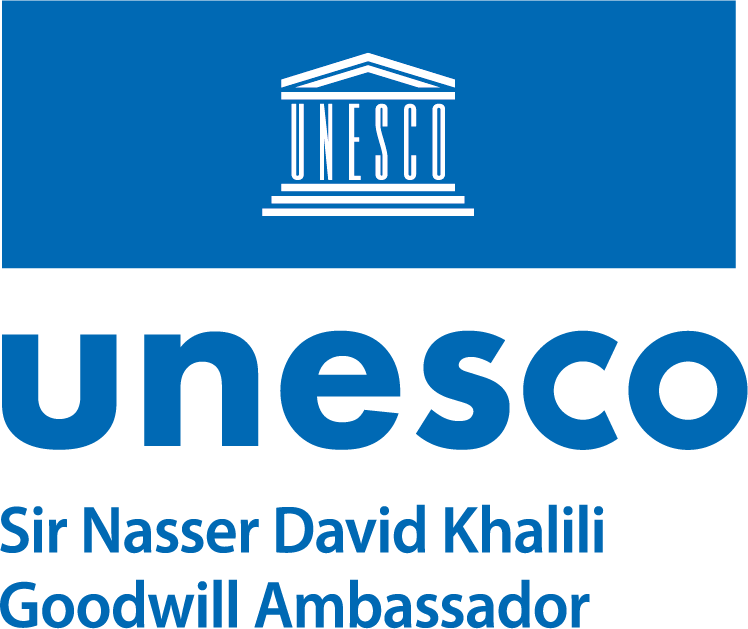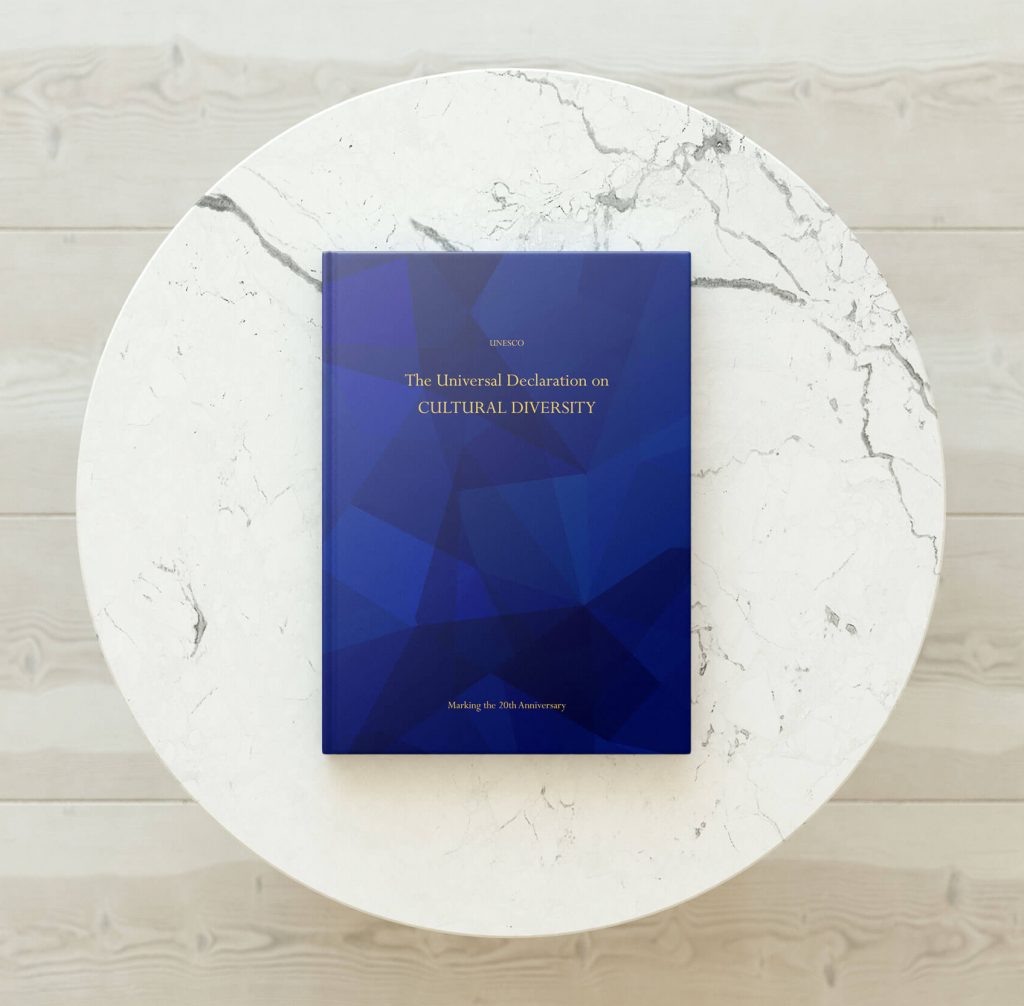
Cultural Heritage Gifts
Over the last three decades, the Khalili Foundation has given a number of substantial grants and gifts to various international organisations, educational establishments and charities. These serve to encourage the excellent work being done by the respective organisations – both at the research and practitioner levels – and to mark occasions of cultural significance.
Gifts to the British Museum
Two fine sitarahs, made for the Prophet’s Mosque in Medina, were gifted to the British Museum to mark the occasion of the hugely successful Hajj exhibition. (January – April 2012).
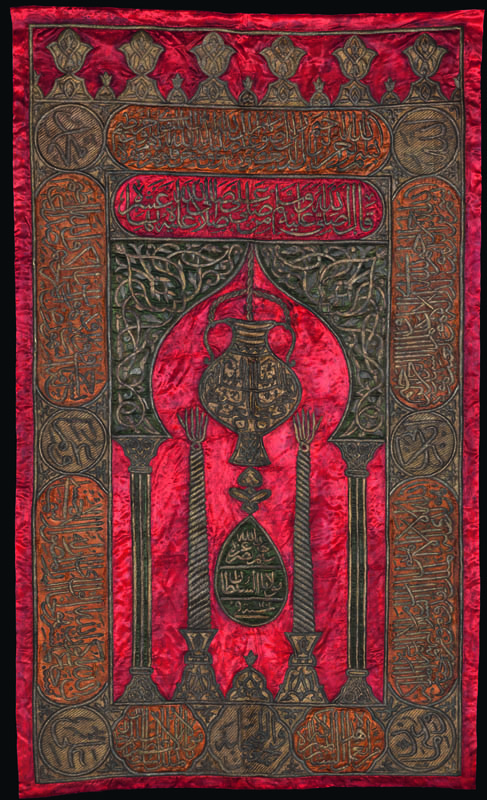
252 × 150 cm
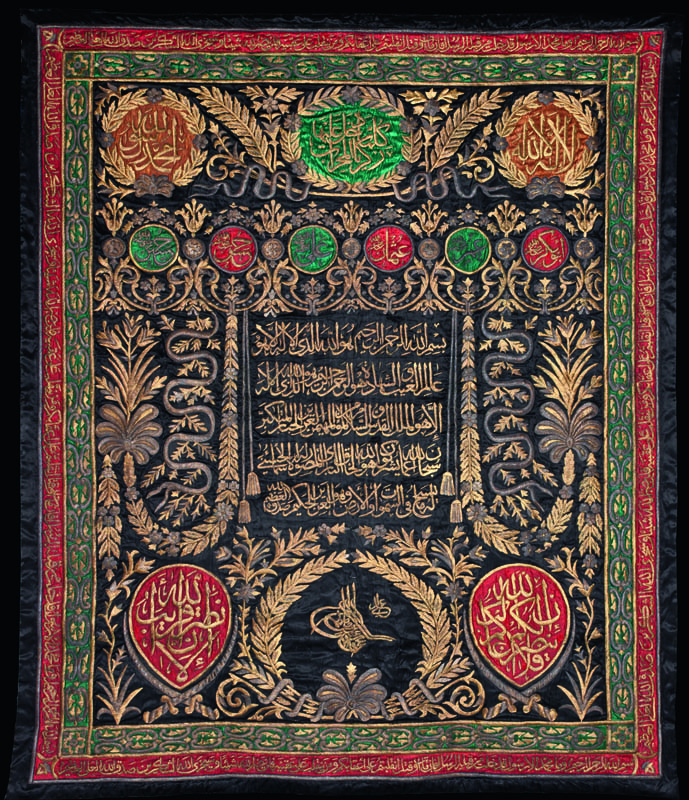
251 × 204 cm
Gifts to the Ashmolean Museum
Sir David gifted another equally fine sitarah, also made for the Prophet’s Mosque in Medina to The Ashmolean Museum, Oxford, in May 2012.
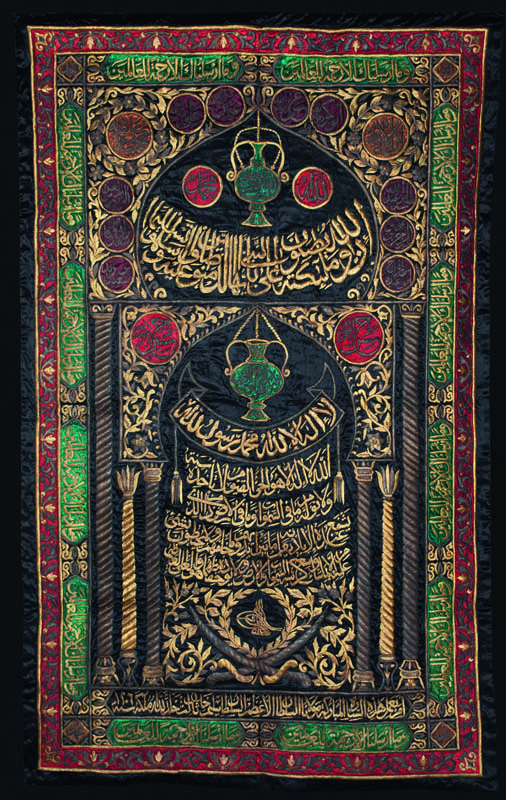
252 × 150 cm
Holy Qur’an presented by Sir David to President Hollande
On the occasion of the opening of the Hajj exhibition at the Institut du monde arabe.
It was subsequently given by the President to the Institute du monde arabe for permanent display.
22nd April 2014
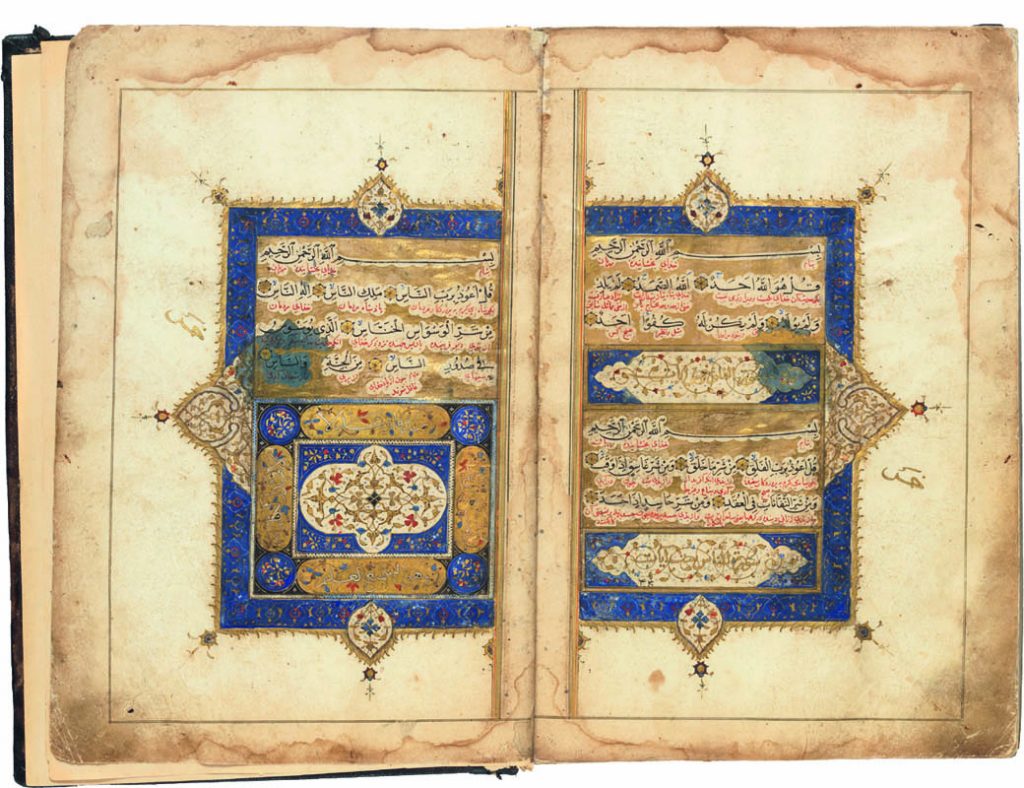
Illuminated closing spread with the last three chapters of the Holy Qur’an. The Qur’anic text is copied in black naskh within cloud lines reserved against gold ground. Persian interlinear translations and commentaries are in a smaller hand, in red, while reading notations are in blue.
Gifts to UNESCO
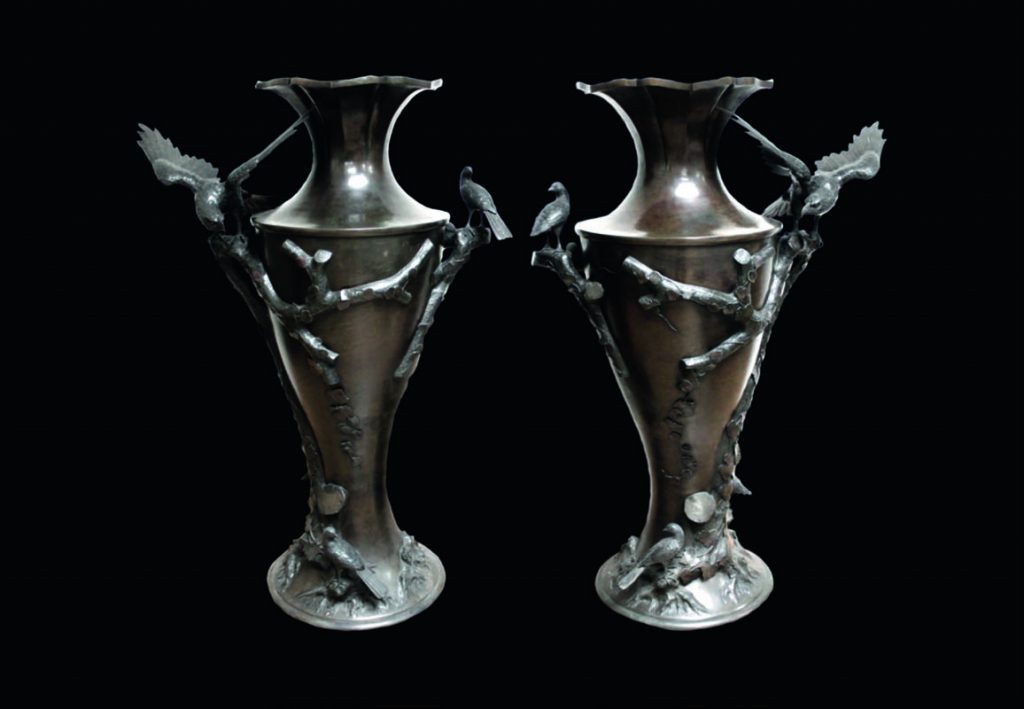
Pair of large bronze vases Japan, Meiji period, 1880 152cm high and 105cm in diameter.
Presented by The Khalili Family Trust In honour of UNESCO 70th anniversary 30th June 2014
A pair of large Meiji-era Japanese metalwork vases in high relief, the bodies and necks of concave form ending with lips shaped as petals. Elements in relief include birds, some with wings outstretched, perching on thick branches, as well as foliage covering most of the feet and the branches.
These pieces, previously part of the Vanderbilt estate, are truly rare examples of Japanese metalwork. Usually reserved for Imperial com- missions and world expositions, bronze pieces of this magnitude rarely ever appeared in the form of vases. Known, and costly for the sheer amount of material and work, as usually being made into large koros (incense burners) and decorative sculptures, is it very unusual for a workshop to choose the vase form. The high relief and detail on these vases add to the artistic value of this complex and unusual work.
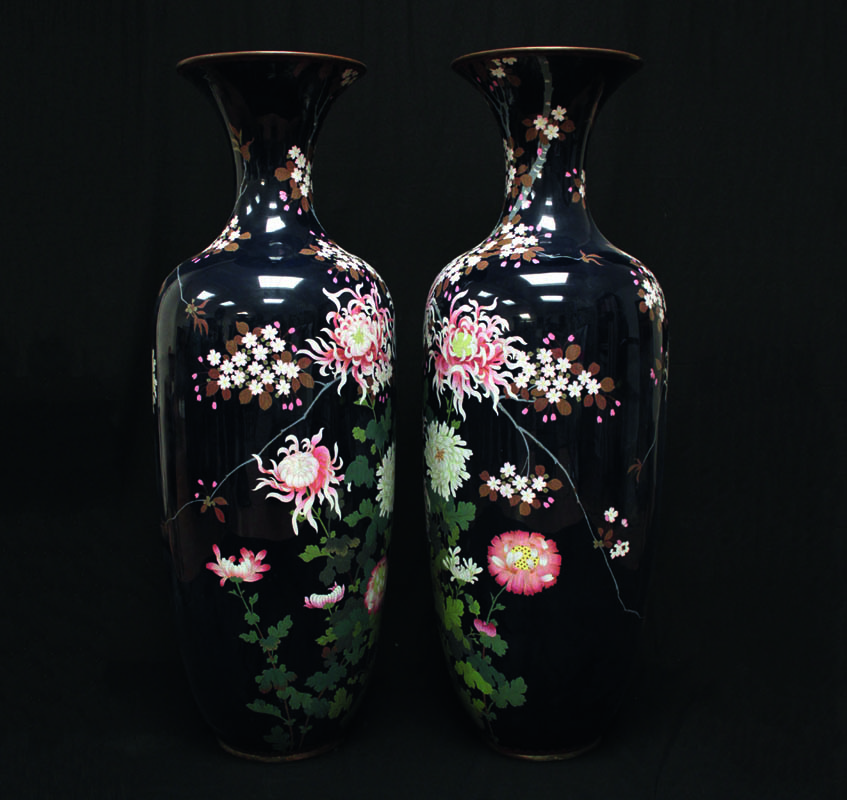
Pair of enamel vases, Japan, Meiji period, 1885 145cm high and 52cm in diameter.
Presented by The Khalili Family Trust In honour of Her Excellency Director- General, Irina Bokova 30th June 2014
A pair of large Meiji-era Japanese cloisonné enamel vases with ovoid bodies and long trumpet shaped necks. The bodies decorated with large pink and white chrysanthemums, brown and green foliage and grey stems worked in gold and silver wire against a dark blue ground. Applied with copper alloy rims and feet.
This is a rare example of a piece of cloisonné enamel by one of several workshops in Japan that specialized in this type of ware. These were usually made under Imperial patronage and received high praise and accolades in Industrial Expositions. It is rare to find pieces of this size due to the practicality of the enameling process, which, in this case, would have required very large kilns. Mistakes and wasted material being costly on vases of this proportion, pieces of this type had to be worked out in fine detail in order to achieve the quality demonstrated here.
Gifts to the School of Oriental and African Studies (SOAS), University of London
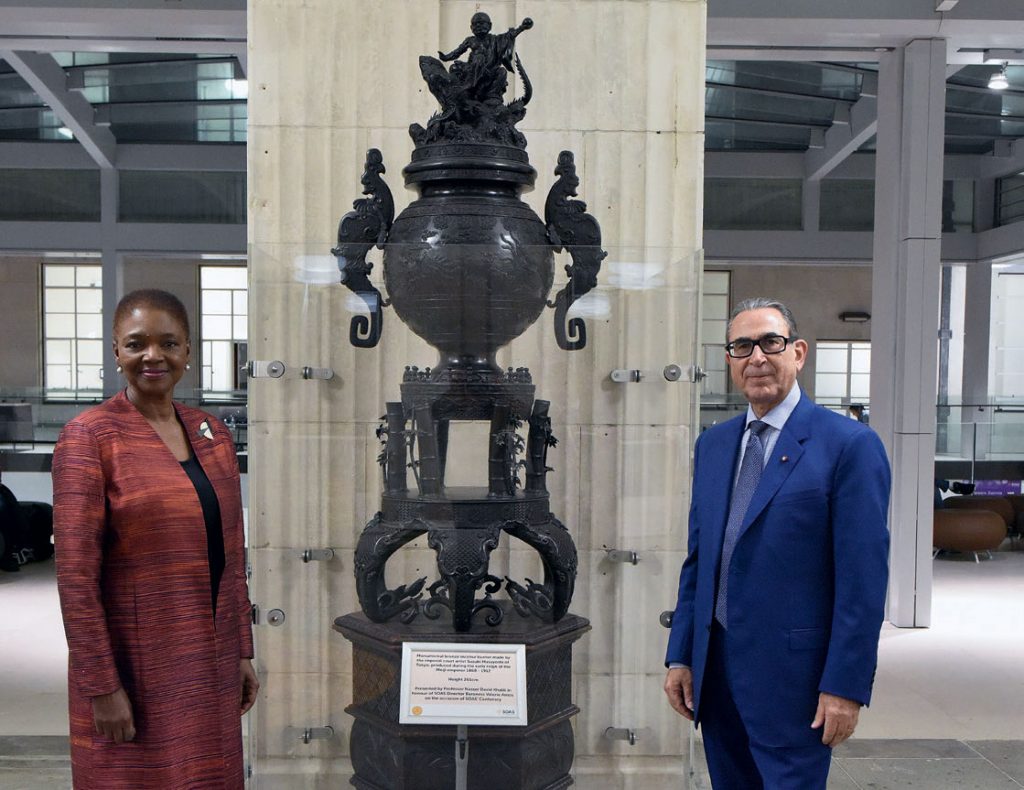
Sir David with Baroness Valerie Amos, Director, SOAS, University of London, 2016
Pictured is a monumental bronze incense burner, with stylized ho-o bird (phoenix) handles and adorned with dragons, bamboo, and a rakan on the cover. Made by the imperial court artist, Suzuki Masayoshi of Tokyo, and signed with Tokyo ju, Suzuki Masayoshi zo (made by Suzuki Masayoshi of Tokyo). Produced during the early reign of the Meiji Emperor (1868–1912). Height 265 cm.
Presented by Professor Sir Nasser D. Khalili in honour of SOAS Director Baroness Valerie Amos on the occasion of SOAS’ Centenary, 2016.
Gift to United Nations
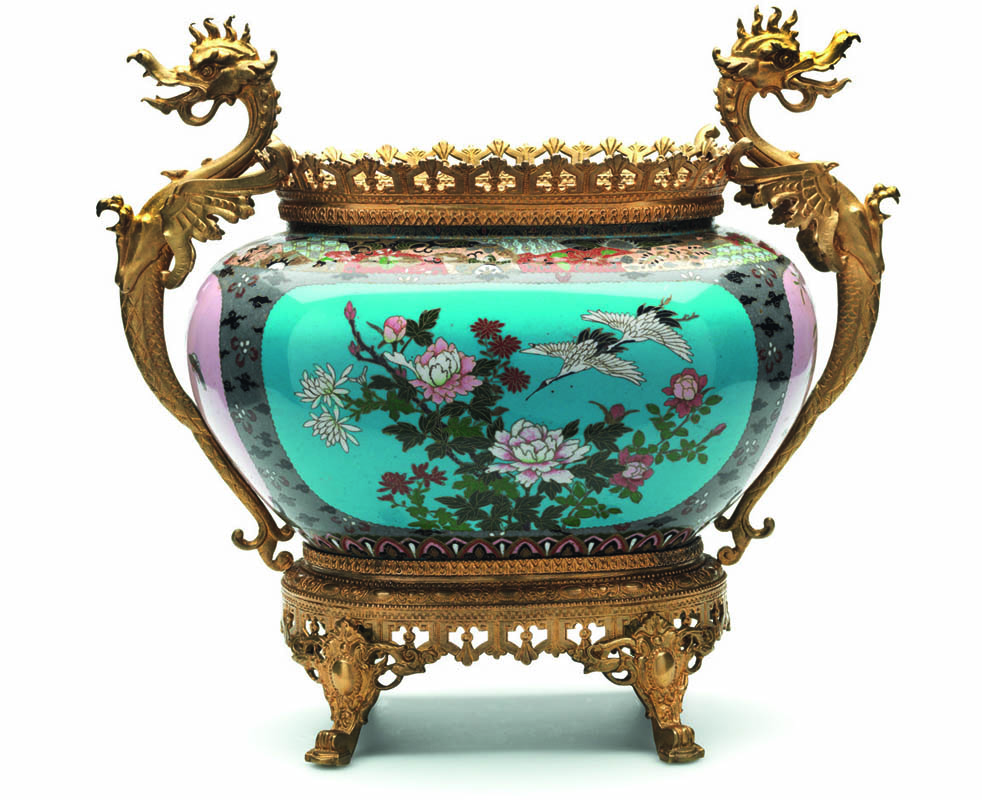
A French Imperial ormolu- mounted Japanese cloisonné enamel jardinière (Japan, Meiji period, circa 1870-1880) 39 length × 24 wide × 36 height cm – presented by the Khalili Foundation and SOAS to Antonio Guterres, Secretary-General of the United Nations on his first visit to the United Kingdom in 2018.
Of bulbous form, lavishly decorated with flying herons and swallows on either side amongst flowering branches, in alternating blue and pink ground cartouches, surmounted by a pierced frieze above a waisted rim. Flanked to the sides by dragon handles, and applied with stylized feet bearing a repeat of the frieze found on the rim. Although unsigned, the enamel can be soundly attributed to Namikawa Yasuyuki (1845–1927), one of the most revered and innovative court artists to the Meiji Emperor, through its design, style and motif.
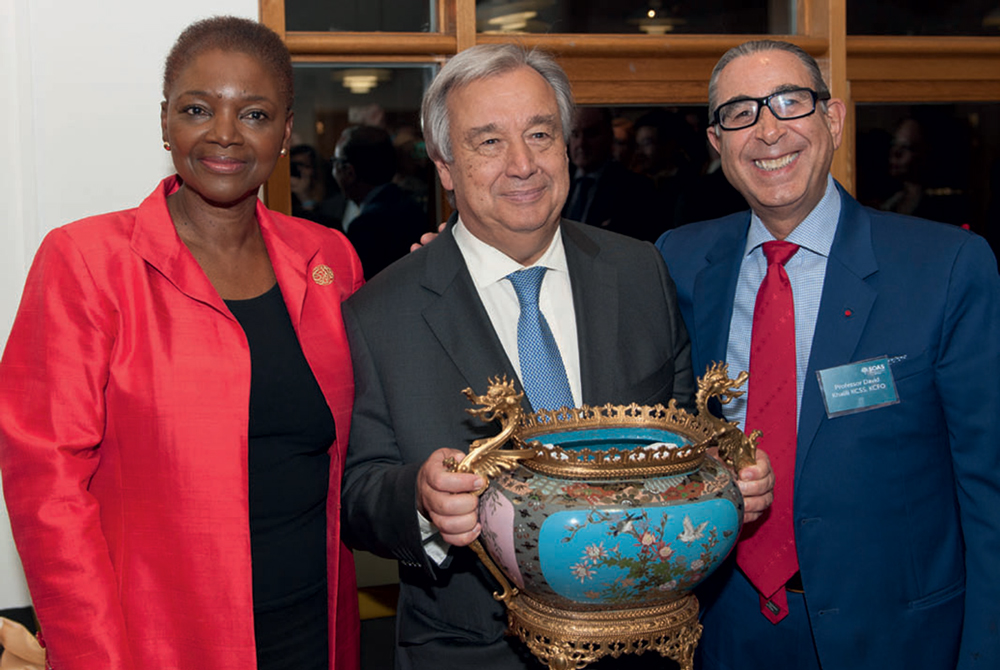
Sir David presenting the gift to UN Secretary- General Antonio Guterres at a special dinner hosted by Sir David and Baroness Valerie Amos, Director of SOAS


